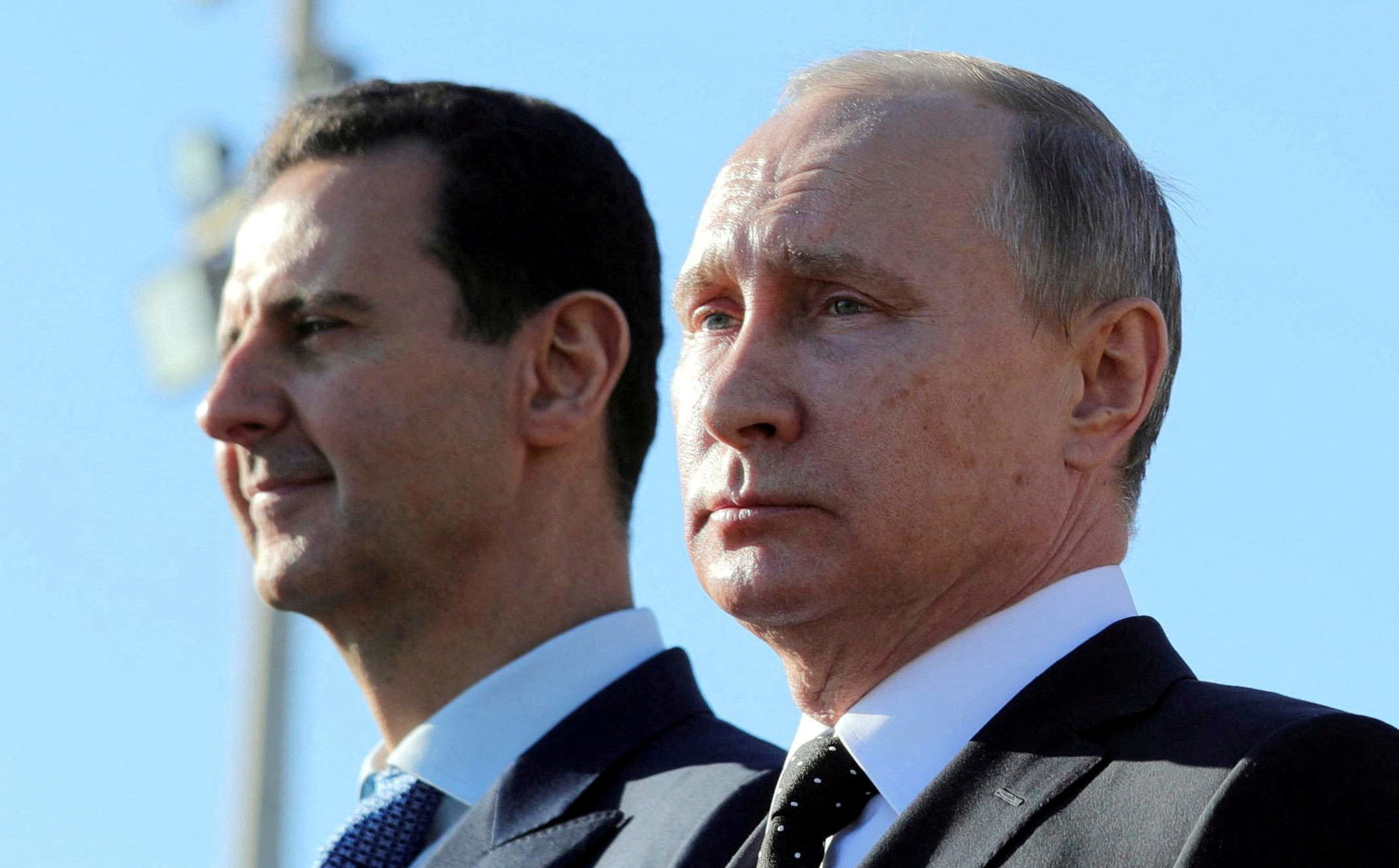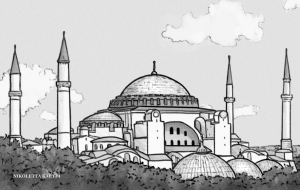The collapse of the House of Assad has exposed a seam of vulnerability for another autocrat, one of the former Syrian leader’s strongest allies: Russian President Vladimir Putin.
At the height of Putin ’s great power ambitions, Moscow sought to project its might far beyond the country’s vast frontiers. It planted bases in the Middle East and Arctic, expanding a shadowy mercenary force into Africa and competing with the U.S. and China for global influence.
Now, with Moscow’s money, attention and ammunition focused on its conflict with Ukraine , the Kremlin’s global power projects are in a state of slow decay.
In Syria, Russia’s air and naval bases have served not only as Moscow’s interface with Syrian allies Iran and Hezbollah, but as a regional bridgehead to funnel troops, mercenaries and arms across the Mediterranean to Africa. Russia’s foothold in Syria was cemented by its 2015 bombing campaign that saved Bashar al-Assad , and forced Washington, Israel and the Gulf states to reckon with the Kremlin as a new power player in the region. But Moscow didn’t unleash a similar level of air power against the rebel offensive that overthrew the Syrian dictator this month.
With Assad gone, Russia’s arrangement in Syria is in doubt. The future of its bases there is now subject to negotiations with the new Syrian leadership.
If Russia is stripped of its main leverage in the region, it will have to look elsewhere, including to Algeria, Sudan or Libya, for potential replacement bases—though few options offer the same advantages as Syria’s Tartus port, one of Russia’s few accessible warm-water ports.
The fall of Damascus has forced the question for Moscow: keep playing costly great power games to compete with the U.S. and China, or cut its losses and retrench to exert strength in its own backyard. Some advisers close to the Kremlin have decided on the latter, betting that to do otherwise isn’t worth the effort or financial burden.
“The least important thing in the world today is the issue of status and prestige,” Fyodor Lukyanov , the head of a Kremlin advisory council on defense and foreign policy, wrote in one of Moscow’s most influential policy journals the day after Assad fled to Moscow. He added that Russia should rethink its role as a regional power. “Returning to an international level…is no longer worth it.”
The U.S. and China too have both struggled to project power in recent years. The chaotic U.S. withdrawal from Afghanistan was disastrous for the Biden administration. Likewise China’s Belt and Road Initiative isn’t the magnet for client states it once was, partly because of onerous lending terms attached to being part of its global infrastructure network.
The question for the Kremlin, however, extends to a host of projects that Putin once promoted to reassert Russia’s position on the global stage and remodel Moscow into the kind of power player that challenged U.S. dominance throughout the Cold War.
Assad’s fall will also make Moscow realign its relations with players across the region, including Israeli Prime Minister Benjamin Netanyahu , with whom Putin hasn’t spoken publicly in a year. In the Gulf, Saudi Arabia is already working to wrestle oil-market share from Russia, threatening Moscow’s oil revenues at a time when military spending has reached post-Soviet record highs.
Russia’s success in Syria turned into a blueprint for Russian intervention elsewhere, from the Central African Republic, where Russia’s Wagner mercenaries protected President Faustin-Archange Touadéra from rebel groups, to Sudan, Libya and Mali.
The crumbling of one of Russia’s closest allies strikes a blow against the Kremlin’s brand in Africa, where leaders saw Russia as a guarantor for their regimes against domestic and foreign enemies.
“If you’re an African leader relying on Russian muscle to stay in power, the fall of Assad’s Syria is an important cautionary tale,” said Daniel Drezner , a professor of international politics at the Fletcher School of Law and Diplomacy at Tufts University. “Though the fact Assad landed in Moscow after all, does prove Russia doesn’t leave its own behind.”
As rebels closed in on Damascus, Assad flew to Russia, which offered him political asylum.
Russia once held tremendous sway in the Middle East and Asia as the world’s second-largest arms exporter. But in recent years, some of those contracts, including some with Moscow’s biggest buyers like Egypt and India, have fallen through.
Cairo was once a major customer for Russia’s arms industry but was forced by the first Trump administration to back out of parts of a $3.5 billion arms deal for helicopters and air-defense systems. Since then, Moscow has come back to Egypt to buy back spare parts for its war effort.
India has likewise seen its share of Russian arms plummet under increased Western pressure and Russia’s inability to make good on certain deliveries due to the war, said a person in Russia’s defense industry.
The Ukrainian conflict has also diverted resources away from another major front for Russian power projection: the Arctic. In the years before the invasion, Moscow was reopening Soviet-era bases along its northern Arctic Sea coast. Those moves were expected to boost infrastructure and traffic along Russia’s Northern Sea Route, which the Kremlin hoped could provide an alternative to travel through the Suez Canal.
But the financial and personnel drain from the Ukraine war forced a retreat. The Nagurskaya base in Russia’s extreme north is still awaiting completion after missing a previous target. A lack of Russian manpower in Ukraine has also compelled Moscow to pull its men out of Arctic stations to plug holes on the front, say Russian military analysts and Western intelligence and military officials.
Likewise, plans to build a new class of premiere nuclear-powered icebreaker, the 10510 Leader Class, saw a major shift following the war. Energomashspetsstal, a metallurgy plant located in Kramatorsk, Ukraine, which had been contracted to produce key parts for the icebreaker, was forced to suspend production when it came under direct fire. As a result, defense industry sources say the cost of the project is expected to rise by 50% and plans now foresee the production of one icebreaker, not three.
Russia still enjoys the ability to project power through its jet fighters and submarines based in the Arctic, which hosts some of Moscow’s most important nuclear assets. But Russia’s need for cash, and increasingly weakened economic position, has given Beijing greater latitude to piggy back on Russia’s Arctic efforts.
As a result, Moscow has ceded some control over its jealously guarded Northern Sea Route to China, which is increasingly seen as the main beneficiary of the route. That has given Beijing greater influence over rules and protocol on the route, said a former Russian official briefed on the matter.
“China is exploiting Russia’s position both in the Arctic and its economic condition,” Njord Wegge, a professor at Norway’s Defense University College. “Russia is under greater constraints, particularly limiting the options to project power in the land domain.”
“That doesn’t mean it won’t be a military threat to NATO countries in the future, but in terms of pure power projection capabilities along NATO’s northern land border the war in Ukraine has depleted much of its prewar capabilities.”
Further, it isn’t clear how Russia’s diminished status will affect potential discussions over Ukraine with President-elect Donald Trump , who wants to bring both Putin and Ukrainian President Volodymyr Zelensky to the negotiating table and end the fighting.
Some Russia analysts expect Putin to pummel Ukraine even harder, both on the battlefield and in negotiations, to demonstrate his resolve.
“If the Syria case means anything, it only increases the importance of Ukraine to Putin,” said Oleg Ignatov , senior Russia analyst for International Crisis Group, a Brussels-based nongovernmental organization. “If he didn’t go all in over Syria, Ukraine is where he believes he must achieve his goals.”
Write to Thomas Grove at thomas.grove@wsj.com



